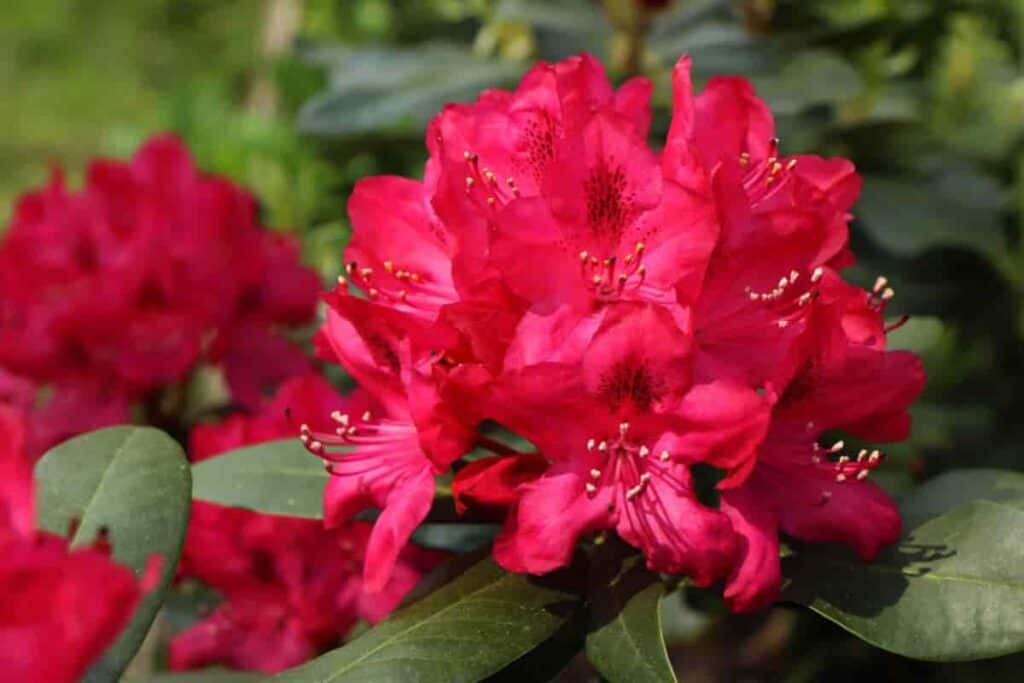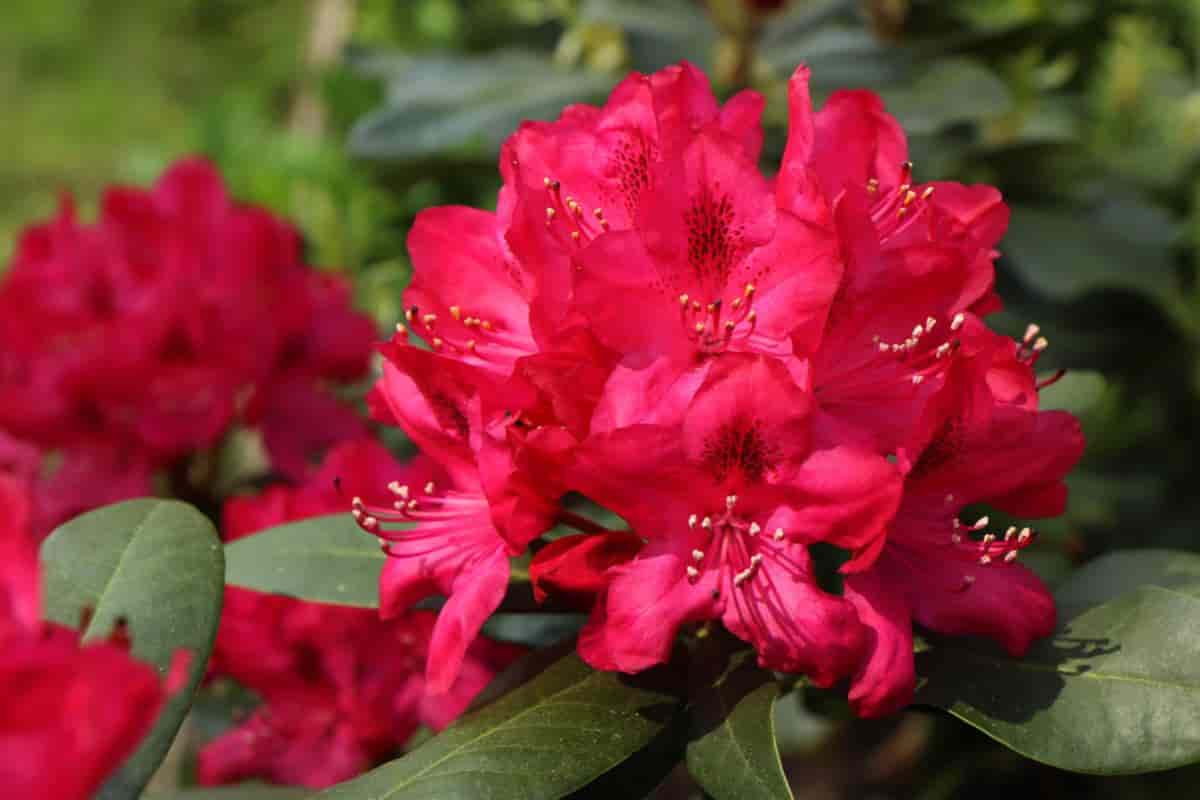Why can’t we grow them here?” is the wistful question so often asked by travelers who have seen the magnificent rhododendrons in the south of England, the west coast of Wales or Scotland, or on our Pacific coast.
Fortunately, these tender rhododendrons can be grown in colder climates using special methods.

Although ambitious gardeners have tried growing them in a few favored spots on Long Island and Cape Cod, where some flourish, they have not been successful when planted in cold, unprotected places.
These non-hardy rhododendrons have been hybridized with our hardier kinds, and already some good new forms spread their lovely petals despite our gales and frosts.
But usually, those few specimens of tender Loderi or Pink Pearl that we do find surviving our climate are mere echoes of their proper glory.
Method Of Planting Rhododendrons
Years ago, I found a method by which many of these more difficult rhododendrons could be wintered and made to bloom in northern New Jersey with only a moderate outlay.
Among those which flowered for me were the following:
- Yellow Rhododendron campylocarpum
- Its delightful hybrid from a cross made with R. williamsianum
- Moonstone, which is orange in the bud, cream when the drooping hells have opened fully
- Temple Bell, a pure pink
- R. sperabile, with its shining little clusters of true red with no hint of purple
- Rich lavender R. oreotrephes
- Fragrant, white large-flowered R. decorum
In growing rhododendrons, heat and drought are as much to be dreaded as cold. The roots and the air around the crowns of these plants must remain moist, as some of the rhododendrons hail from regions where rainfall of 200 inches a year is normal.
Mine were given an oak grove by a stream, a spot sheltered from strong winds for their summer quarters.
Potted Rhododendrons
To keep the roots perpetually moist, the rhododendrons were potted using nothing smaller than a standard 6-inch pot, with at least an inch of coarse gravel drainage at the bottom.
The pots were set in large, leveled galvanized steel pans, in which at least a quarter of an inch of water and not more than an inch remained at all times.
Leveling the pans required some care; otherwise, some pots would receive too little or too much water.
To maintain the necessary acidity and prevent the pans’ rust, a few dead oak leaves were thrown into the water and allowed to remain there. The plants need these dead leaves or their equivalent of tannic acid.
Potting Soil
The roots require light, porous potting soil, preferably including some sand and plenty of sedge peat. For the bulk of the soil, a good oak leaf mold is ideal.
Repotting every year or two to larger pots is important, for rhododendrons ordinarily will not thrive without a mulch, and mulching in the pot is not practicable.
The only fertilizer I used was Dexter’s mixture:
- 2 parts superphosphate
- 1 part nitrate of potash (not nitrate of soda, which poisons them)
This is spread on the surface every spring, about 1 tablespoonful to a 6-inch pot, and proportionately more for larger pots.
These rhododendrons are usually frozen up for several months of the year, often buried in snow. My most successful winter quarters for them consisted of a cold pit.
This is a frame built of cinder block, the bottom at least 2’ or ‘3 feet below ground level, the top covered with a glass sash.
Here, pans of water will not do. So instead, the pots are plunged in well-moistened peat moss.
Sloping Sash
To prevent overheating on sunny days, the sash should slope all the north sharply. Lath shade is necessary all the time. Ventilation is needed only on hot days in spring.
The sash must remain in place at night until all danger of frost is past, or the young foliage, most of which comes out before that time, will be ruined.
Flowering in March
Flowering sometimes begins as early as March, but more commonly about April 15. When tile buds have started to swell, the plants may be removed to pans of water on a cool sun porch. Here the flowers will often last two or three weeks.
When the plants are well-budded, these rhododendrons offer a spectacle few other shrubs can equal.
Do Not Crowd The Pots
Since potted plants tend to become leggy, do not crowd the pots together during the growing or flowering season. The shade in which they stand should not be too dense, but too much sun, on the other hand, may be disastrous.
Frequent repotting into larger pots, eventually into tubs, if necessary, helps reduce legginess.
Buds Begin To Expand
About flowering, time or a little later, the foliage buds begin to expand. The topmost of these non-flowering tips can be pinched off easily when they reach a length of an inch or so.
As soon as the tip bud has been removed, several buds just below it will swell, each developing into a branch.
Tips which flower perform the same service for themselves and require no pinching. Pruning of completed growth should seldom be resorted to because its removal destroys the portion on which flower buds for next spring are about to form. Sometimes this occurs as early as June.
Insect Pests
Few pests attack rhododendrons, but it is usually necessary to spray at least three times a year with a Bordeaux mixture and arsenate of lead.
Add some dry chrome green, dark pigment to color the spray to prevent unsightly whitening of the foliage.
When the lace bug appears, use nicotine sulfate immediately, preferably spraying twice within 24 hours. Stronger sprays may bring ruinous attacks from the midge.
Rhododendron Species
Rhododendrons of many species and varieties are obtainable from nurseries in Washington and Oregon, from which they can be shipped East as small plants.
For grounds of moderate size, do not attempt to grow the largest forms, such as:
- Loderi
- Naomi
It might be necessary to discard them as too large even before they reach flowering size:
- Cornubia
- Gill’s Crimson
- Loder’s White
- Betty Wormald
- Shilson
- Mrs. Furnival
- R. arboreum
- R. sinogrande
- R. calophytum
- Mrs. Ashley Slocock
- Pink Pearl
- Temple Bell
Will not reach such large dimensions or will open abundant blooms while still small:
- Moonstone
- Dairy Maid
- Lady Alice Fitzwilliam
- Blue Diamond
- Earl of Athlone
- R. oreotrephes
- R. campylocarpum
- R. decorum
- R. griersonianum
- R. maddenii
- R. crassula
- R. johnstoneanum
44659 by G. G. Nearing
